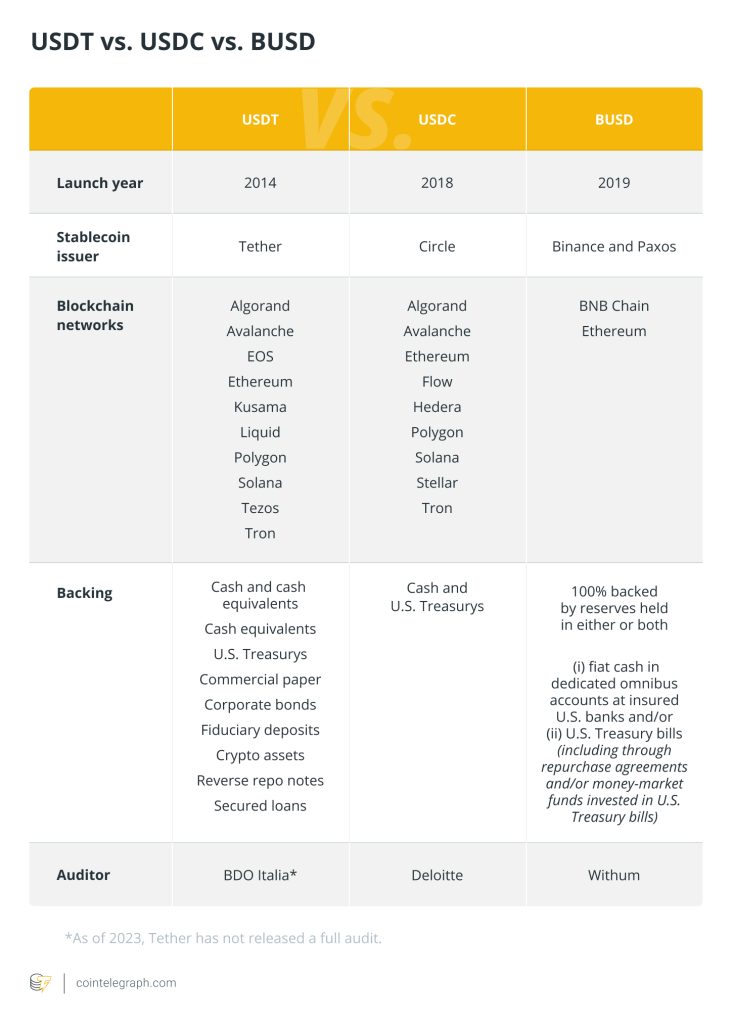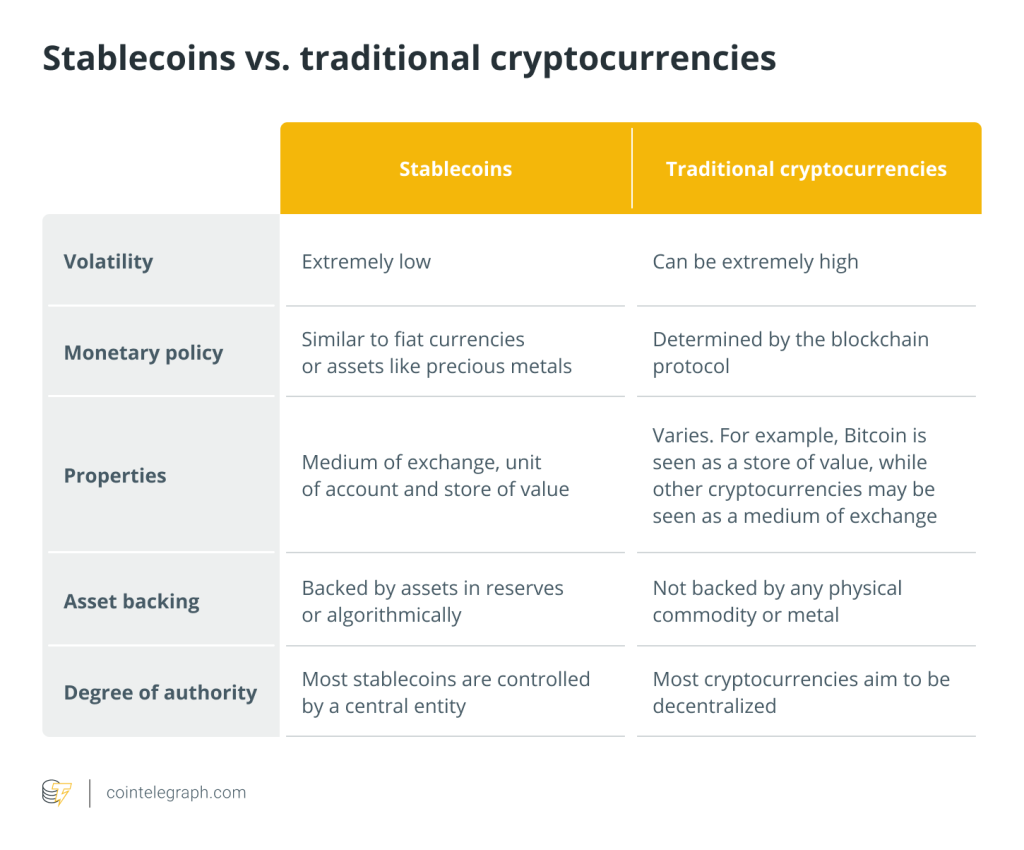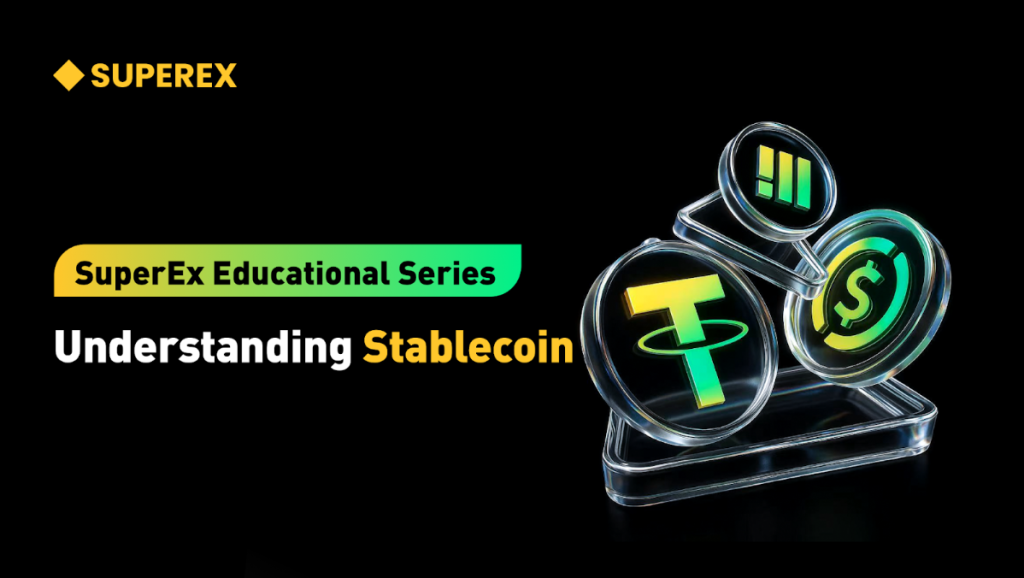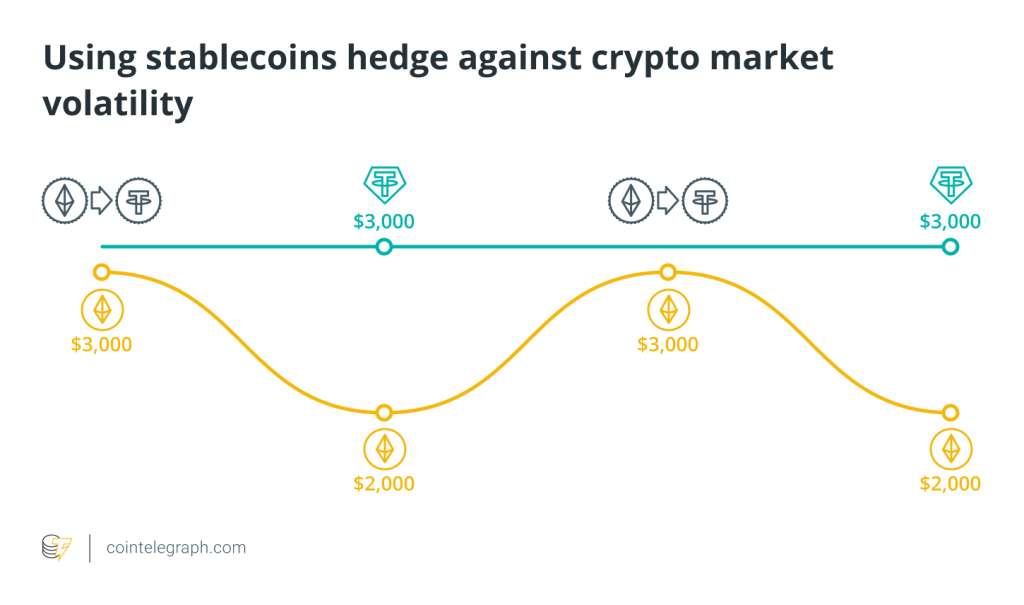USDT vs. USDC vs. BUSD: What are the similarities and differences?


Stablecoins give investors the experience of both the traditional and crypto worlds by offering stability via fiat money backing, plus the ability to quickly transfer funds on blockchain networks.
Tether (USDT), USD Coin (USDC) and Binance USD (BUSD) are some of the known stablecoins in the crypto space. All three stablecoins are backed 1:1 by their respective reserve currencies, giving them value stability. However, there are a few key differences between them. This article will explore the similarities and differences between USDT, USDC and BUSD.
What are stablecoins?
Stablecoins are cryptocurrency assets whose value is pegged to that of a stable asset, such as fiat money or gold. Fiat-backed stablecoins are often pegged to the value of the United States dollar at a 1:1 ratio.
As mentioned, stablecoins provide users with the convenience of fast, inexpensive and secure transactions via blockchain without having to deal with the limitations of traditional financial systems.
As their name suggests, stablecoins provide stability and considerably less volatility than other crypto assets such as Bitcoin (BTC) and Ether (ETH). The benefits of stablecoins include:
- Fiat backing: Blockchain technology makes transactions secure, and the fact that they are backed by fiat currency adds an extra level of safety for investors
- Availability: While typical banks are closed on weekends or holidays, you can still use cryptocurrency exchanges to get the currency you need. These exchanges are available 24 hours a day, seven days a week, and can be found worldwide
- International usage: Stablecoins offer a way to send and receive cross-border payments quickly and easily.
- Stability: Stablecoins are cryptocurrencies that don’t fluctuate in value like other digital assets, meaning that the price will generally stay consistent with traditional fiat currencies
- Quick transactions: Deposits in regular currencies can take a long time to show in your bank account. However, stablecoin transactions are significantly faster and usually instant
- Low transaction fees: With a typical transaction, you’re stuck paying absurdly high fees, especially if it’s an international fund transfer. On the other hand, stablecoins provide an opportunity for low-cost transactions, with some even providing zero-fee trades, transfers and conversions (e.g., Crypto.com and Binance).
- Transparency: Many stablecoins are transparent, so users can see that there are enough assets in reserves to redeem them.
How do stablecoins work?
Smart contracts are used to manage the creation and redemption of stablecoins. For example, users can exchange their traditional currency, such as USD, for the equivalent amount of stablecoin on a 1:1 basis. This fiat currency is then held in reserve by the stablecoin issuer, allowing users to redeem their tokens at any time for the same value in fiat currency.
However, it’s important to note that stablecoins can be backed by multiple sources other than fiat currency. These include precious metals, other cryptocurrencies and even algorithms. A stablecoin’s risk level is directly proportional to its backing source. Generally, most fiat-backed stablecoins tend to be more stable than others owing to their link to a centralized financial system.
However, the redemption of one’s stablecoin holdings in its equivalent value in fiat is not guaranteed. From a legal standpoint, most stablecoin issuers do not offer their users the legal right to claim fiat currency back.
In the case of Tether, for example, its terms of service explicitly state that they hold the right to delay users from withdrawing or redeeming their tokens in the event of illiquidity or loss of their assets held in reserve. Furthermore, a provision regarding returning Tether tokens in-kind, meaning that they can return securities or other assets to its users instead of fiat money.
Crypto-backed stablecoins, on the other hand (such as a Bitcoin-backed one), may experience significantly more volatility and may not always be able to maintain their peg due to the volatility of their underlying assets.
Algorithmic stablecoins also carry a lot of risk due to their architecture, and are extremely vulnerable to devaluation, depegging and speculative attacks. TerraUSD (UST) and its sister token Terra (LUNA), for instance, rocked the stablecoin industry with controversy when UST lost its peg to the U.S. dollar, resulting in a massive depeg. LUNA’s price continued to plummet as investors kept selling UST at lower prices amid further depegging, resulting in a huge meltdown within the Terra ecosystem.
What is USDT, and how does it work?
USDT is one of the most popular stablecoins, with a market cap of over $69 billion. The stablecoin is issued by Hong Kong-based company iFinex, which also owns the BitFinex crypto exchange.
It is pegged to the U.S. dollar on a 1:1 basis, and each USDT token is backed by assets held in reserve. As such, USDT can be spent, transferred or exchanged much like any other fiat currency.
Tether was among the first cryptocurrencies to be able to address blockchain-related challenges, such as facilitating transfers of national currency and providing customers with a method for checking the token’s value.
While USDT has faced controversies surrounding its reserve management and level of decentralization, it remains one of the most widely used stablecoins in the market and is accepted by numerous exchanges and compatible with several wallets.
The company behind Tether has also been more transparent in disclosing its cash reserves via monthly transparency reports in an effort to address concerns surrounding its stability.
What is USDC, and how does it work?
USDC is also a U.S. dollar-backed stablecoin, and it was developed to reduce Bitcoin’s and other cryptocurrencies’ volatility through faster fund transfers. Created by Circle Internet Financial, USDC is an Ethereum token that can be stored in a crypto wallet or transferred to the Ethereum blockchain.
It differs from USDT, however, in that it is fully collateralized and transparent, meaning that they are very open about its ecosystem and reserves. USDC tokens can be redeemed 1:1 for USD through Circle’s partnered regulated financial institutions, which are required to undergo monthly attestations and audits to ensure reserve adequacy. This promotes trust and transparency in the stablecoin’s value, as opposed to USDT’s controversial management.
However, on March 10, Circle, the issuers of USDC, made an announcement stating that USDC had depegged from the U.S. dollar, with approximately $3.3 billion out of its total reserves of $40 billion in USDC trapped in the now non-operational Silicon Valley Bank.
Regardless, USDC is also a more widely adopted stablecoin, with over $20 billion in circulation and support from leading exchanges and wallets such as Coinbase and Gemini. It has also gained the backing of major financial institutions such as Goldman Sachs, Visa and Bitmain.
USDC has expanded to become more multichain and is also natively available on blockchains such as Polygon, Avalanche, Algorand, Solana, Hedera, Tron and more.
What is BUSD, and how does it work?
Binance and Paxos created BUSD to facilitate access to fast and flexible transactions for crypto users. BUSD is also fiat-backed, regulated, has the same worth as one USD and can be redeemed 1:1 for cash.
BUSD currently lives on Ethereum in addition to BNB Chain. As such, BUSD holders may exchange stablecoins inter-blockchain, allowing for greater flexibility and potential cost savings in transfers.
BUSD has also been expanding its network with support from major exchanges such as Huobi and OKX, wallets like Trust Wallet and financial institutions including BlockFi. Unlike some stablecoins that may face questions surrounding trust and transparency, BUSD is regularly audited by Withum, a top-ranking accounting firm.
USDT vs. USDC vs. BUSD: Similarities
Despite being issued by different companies, these three popular stablecoins have a number of similarities. First, all three are fiat-backed and have a 1:1 worth with the USD, making them more stable options compared to cryptocurrencies. They are also all commonly accepted and supported by major exchanges and wallets and can be redeemed for cash on a 1:1 basis.
They are also regularly audited in an effort to promote trust and transparency in their value. Furthermore, all three stablecoins are available on the Ethereum blockchain, although they have all been expanding to become multichain.
USDT vs. USDC vs. BUSD: Differences
There are also key differences that may affect a user’s decision on which stablecoin to use. One key difference is the blockchains on which these stablecoins are available.
For instance, BUSD remains limited to Ethereum and BNB Chain, whereas USDC and USDT have become more multichain, covering networks such as Solana, Algorand, Avalanche, and more. The main advantage of being on multiple blockchains is speed, allowing users to trade assets more quickly and potentially at lower fees.
Moreover, USDT remains a controversial option due to its reserve management. In contrast, USDC and BUSD have gained the backing of major financial institutions and undergo regular audits to ensure reserve adequacy.
There are also other key differences between the three, such as concerning their auditing firms and backing assets. Here’s a quick comparison of the three stablecoins:

In terms of stability, USDT is at a disadvantage as it has occasionally dipped below $1.00, leading some skeptics to believe that Tether's dollar reserves may not be fully backed. USDT’s value has also risen way above $1.00 on multiple occasions, even going as high as $1,000 per USD in 2019. The lowest it has traded so far was at $0.001 per USD, also in 2019.
In January 2023, a bug in Binance's collateralization system led to depegging of BUSD. The stablecoin USDC also encountered a significant decline in value following the closure of Silicon Valley Bank on March 10, 2023.
Ultimately, the choice of stablecoin may depend on personal preference and what is supported by a user’s preferred exchange or wallet. It may also depend on the specific use case, as some stablecoins may have advantages in certain situations over others.






… [Trackback]
[…] Read More Info here to that Topic: x.superex.com/academys/beginner/3548/ […]
… [Trackback]
[…] Read More Info here to that Topic: x.superex.com/academys/beginner/3548/ […]
… [Trackback]
[…] Information to that Topic: x.superex.com/academys/beginner/3548/ […]
… [Trackback]
[…] Find More here to that Topic: x.superex.com/academys/beginner/3548/ […]
… [Trackback]
[…] Find More Info here on that Topic: x.superex.com/academys/beginner/3548/ […]
… [Trackback]
[…] Find More Info here to that Topic: x.superex.com/academys/beginner/3548/ […]
… [Trackback]
[…] Read More to that Topic: x.superex.com/academys/beginner/3548/ […]
… [Trackback]
[…] Read More to that Topic: x.superex.com/academys/beginner/3548/ […]
… [Trackback]
[…] Find More here to that Topic: x.superex.com/academys/beginner/3548/ […]
… [Trackback]
[…] Find More Info here on that Topic: x.superex.com/academys/beginner/3548/ […]
… [Trackback]
[…] Find More to that Topic: x.superex.com/academys/beginner/3548/ […]
… [Trackback]
[…] Find More Info here to that Topic: x.superex.com/academys/beginner/3548/ […]
… [Trackback]
[…] Read More here to that Topic: x.superex.com/academys/beginner/3548/ […]
… [Trackback]
[…] Info to that Topic: x.superex.com/academys/beginner/3548/ […]
… [Trackback]
[…] Find More on that Topic: x.superex.com/academys/beginner/3548/ […]